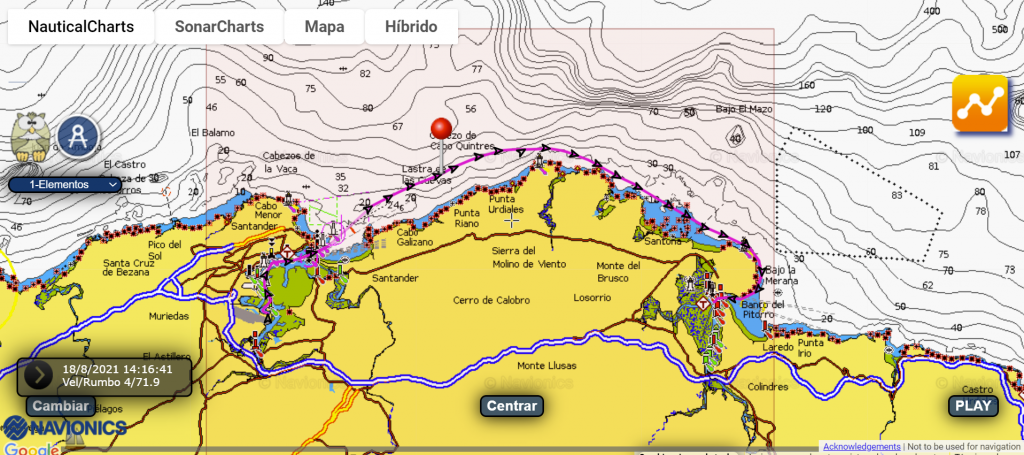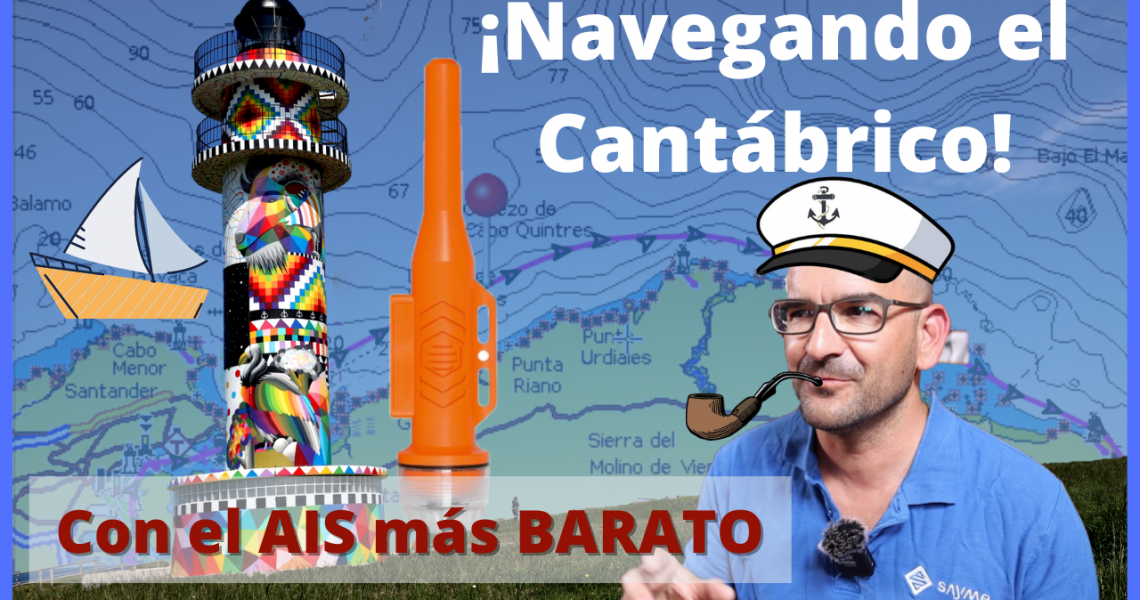The cheapest AIS emitter on the market, for your boat
Greetings sailors,
Today we are going to test the cheapest AIS transponder that I could find and which of course is Chinese. In fact, total Chinese.
Officially they call it a locator for fishing nets, specifically “SOCOTRAN Net Locator“, but we will see that it is actually a perfectly functional AIS transponder, to which we will be able to incorporate the identification information of our boat and that will make us visible to the rest of the boats, greatly improving navigation safety, especially at night or in adverse conditions.
Be warned that, despite the fact that it is a device with CE certification, it is not approved by the DGMM in Spain, they do not pay to appear on their list of approvals, so it is not recognized for use in boats with the Spanish flag. .
Motivation
Let’s start by giving a brief overview of the AIS system, what it is and why it can be so useful to increase our security.
The acronym AIS comes from English and stands for Automatic Identification System, which basically means automatic identification system.
It is a transponder system, in the style of what happens in airplanes with ADS-B, which, through VHF radio frequencies, and with a specific protocol, transmits the identification data of a ship, to all those who are listening, as well as their heading and speed. With what anyone listening with a suitable system, he can pick up those signals and determine the boats around him at a distance of quite a few miles (the same as the VHF radio), as well as their intentions: Heading, speed, type of boat , dimensions, draft as it is dedicated.
Basically it is as if it were a radar, but more advanced and much cheaper to implement, especially if all we want is to see the boats that surround us. In fact, you will remember this post, in which we built a receiver for our boat.
It also has its disadvantages, for example compared to radar, since it is only mandatory on passenger ships and large cargo ships. But, at the same time, its B version is being seen more and more in pleasure boats of all kinds, which is the standard that the transponder that we are going to see here complies with.
Shopping
Purchases are going to be very simple, just looking around AliExpress for a long time I already saw this type of buoys for fishing and I was eager to see if one of them would serve as AIS for my boat. So I decided to buy one.
There are several models, all very similar. That change itself has an internal or detachable antenna and little else.
And specifically, I bought this one: https://s.click.aliexpress.com/e/_9yJaCg with its programming cable, this is very important if you are only going to buy one, or if you do not have a friend who already has the cable nearby ( You can consider me a friend with the cable).
I chose this type of device, because it is very cheap, and because I already had the Raspberry to use as a receiver, if not, there is some very popular transmitter-receiver (not approved by the DGMM either, of course, it does not like things that do not have inflated prices) such as the Matshutec HA-102, which is very popular among unsuspecting sailors and that for about 235 euros https://s.click.aliexpress.com/e/_AqLnL2 is transmitter and receiver, although it has a slightly more complex installation as it does not have a built-in antenna and stuff.
Start up
Well once we have everything to start it is very simple. Once loaded, we can simply unscrew the bottom cover and turn it on by turning the switch, and if you put the cover back on it will be completely watertight and will work even if it falls into water, which is what it is designed for.
Of course, by default it will transmit with an invented random identification, which is not very legal, and that on top of it will be very suspicious.
So the first thing to do is download the application to a Windows computer, plug in the cable, and start the program following the instructions. You can ask for the program through the AliExpress chat in Chinese, as I did, or directly download a copy of the one that sent me from this link.
There are currently three different versions I have seen of the device:
They all require you to have the prolific serial driver installed: http://www.prolific.com.tw/US/ShowProduct.aspx?p_id=225&pcid=41
- V1.45 The oldest, used the name of the boat to put the battery level. You have the programming software here
- V1.7 The one I have used the length to set the battery level. You have the programming software here
- V1.9 The most current so far and the best. It uses the vendor field for the battery, so it doesn’t interfere with any relevant data. You have the programming software here.
All values can be changed and filled in except setpoint A which uses it to indicate the percentage of battery remaining. This is undoubtedly the only thing I don’t like about it, and that it may be changed again in new versions. Because in the end, your ship is going to appear to be as big as your remaining battery. In order not to draw too much attention, I have chosen to leave the rest of the dimensions blank so that it is evident that the size of the boat is not correct.

Another piece of information that is interesting to fill in is the ShipAndCargo that indicates what type of vessel you are. You have here the link to a table of the possible codes and their meaning in the AIS system.
Well, and that’s it, now it’s a matter of turning it on outside the boat, looking for a good location, the higher the farther it will go, like any VHF antenna, and see how it works. In the video, at the beginning, you have good proof of its operation.
Conclusions
Well, the truth is that the Chinese AIS works quite well. It has a lot of good things and some bad things.
Among the good ones, that it is self-contained, waterproof, that it has its own antenna, and that you can use it or not as you please. I consider it more to use it when I sail at night or in bad weather, or alone and in normal use to have it stored. In the end, when it gives its true value it is with bad conditions.
I did not know in localizatodo.com the ability to share a link of your position, the truth is that it is almost like sharing your WhatsApp location, and the possibility of reproducing the movement of ships in the past, which you have seen during the video, it’s amazing. I liked that a lot, although it is valid for any AIS.
The battery has surprised me, you can expect a continuous week of operation with a load without a major problem and if a storm melts everything, there you have it still working. Or if you have to hastily abandon the ship you can take it with you so that they can easily locate you.

In the weak spots, I don’t like that the battery looks like one of the dimensions of the boat, I would prefer that just when the battery is low, it blinks red or something, like that … But hey, it’s a lesser evil. And as improvements I would put an SOS button or something like that, to be able to use it in an emergency .. But hey, it is what it is for its price.
I have bought it, I am happy with it and I always carry it ready on the boat and, on long journeys, on. In the end, even if it is not approved by the DGMM, it is an element that will contribute positively to the safety of maritime traffic.

